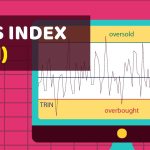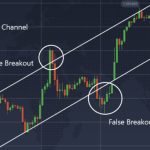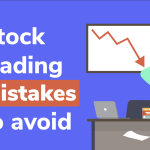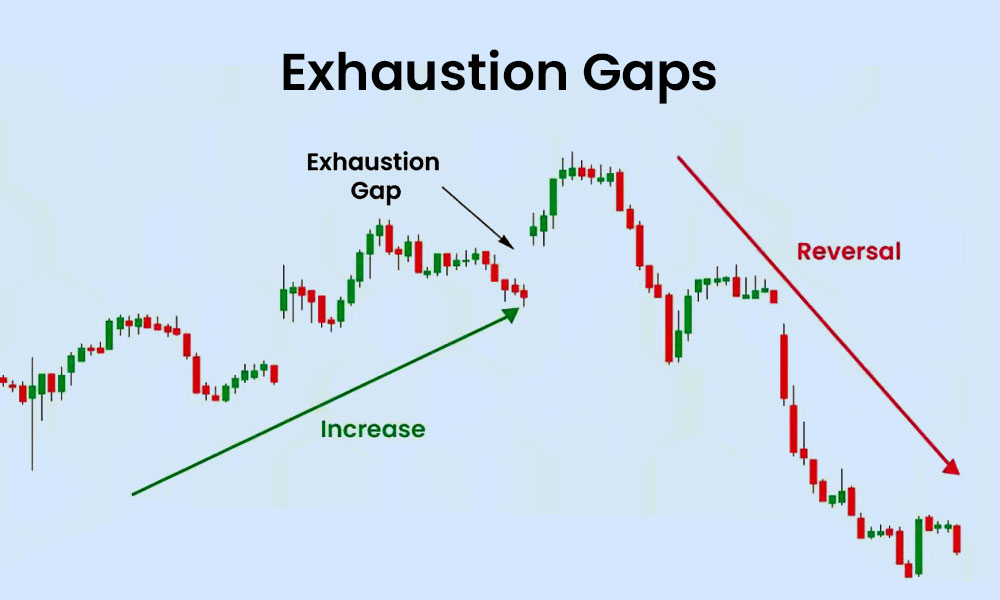
By ATGL
Updated July 4, 2025
Price gaps represent some of the most dynamic opportunities in stock trading. These sudden price movements occur when securities open significantly higher or lower than their previous closing price, creating visible spaces on charts that savvy traders exploit. Gap trading strategies capitalize on these discontinuities through systematic approaches that identify optimal entry and exit points while managing inherent risks.
The techniques covered encompass momentum-based strategies that ride powerful price movements and contrarian methods that profit from market corrections. Understanding these diverse stock gap strategy options allows you to adapt your approach based on market conditions and risk tolerance.
Identifying Key Gap Types in Stock Trading
A gap occurs when a stock’s opening price differs substantially from its previous close, leaving visible space on the price chart where no trading occurred. These gaps typically result from overnight news events, earnings announcements, or economic data releases that shift market sentiment before the next trading session.
Professional traders recognize that different gap types present distinct opportunities requiring specialized gap trading techniques. Classification depends on their position within existing trends and accompanying volume.
Breakaway Gaps
Breakaway gaps signal new directional moves and frequently occur after periods of consolidation. These gaps appear when stocks break through significant resistance or support levels, often accompanied by substantial volume confirming institutional interest.
These gaps commonly develop following major corporate announcements or sector-wide news that fundamentally alters investor perception. The strength of breakaway gaps often correlates with the duration of the preceding consolidation — longer accumulation phases typically produce more powerful moves.
Successful breakaway strategies focus on identifying stocks approaching key technical levels with building volume and strengthening momentum indicators.
Continuation Gaps
Continuation gaps appear within established trends and signal that the prevailing direction will persist with renewed vigor. These gaps occur when strong momentum carries prices beyond normal ranges, often triggered by additional news reinforcing existing sentiment.
Volume analysis becomes critical when evaluating continuation gaps, as authentic moves typically feature expanding volume confirming institutional participation. Weak volume suggests limited conviction and increased probability of gap fills.
The most profitable continuation gap strategies focus on well-established trends with multiple confirmation signals and clear fundamental catalysts supporting the directional move.
Exhaustion Gaps
Exhaustion gaps occur near the end of extended moves and frequently precede significant reversals. These gaps often coincide with climactic volume spikes as final buyers or sellers enter positions, creating unsustainable levels that ultimately reverse.
Recognizing exhaustion gaps requires careful analysis of trend duration, momentum indicators, and market sentiment extremes. These gaps typically appear after substantial directional moves over weeks or months, accompanied by deteriorating technical indicators despite continued price advancement.
Gap and Go Strategy: Riding the Momentum
The gap and go approach represent one of the most straightforward investment strategies, focusing on stocks that gap significantly and continue moving in the same direction throughout the session. This gap trading technique works particularly well in trending markets with strong news catalysts.
Successful implementation requires rapid market scanning to identify the strongest gapping stocks before institutional momentum accelerates beyond optimal entry points. Traders typically focus on gaps exceeding 3% to 5% with substantial premarket volume indicating genuine large participant interest.
Entry timing becomes crucial, as premature entries risk volatile opening ranges while delayed entries may miss profitable portions. Many professionals wait for brief pullbacks, providing better risk-to-reward opportunities than chasing initial moves.
Volume confirmation validates gap and go setups, as authentic momentum moves feature sustained volume throughout the session rather than front-loaded activity that quickly diminishes.
Gap and Fade Explained: How To Trade Market Reversals
Gap and fade strategies capitalize on the statistical tendency for many gaps to eventually fill, meaning price returns near the previous day’s close. This approach works particularly well with gaps lacking fundamental justification or occurring in low-volume environments where temporary imbalances create artificial levels.
The gap trading technique behind fade strategies involves identifying overextended gaps exceeding normal price ranges. Stocks gapping more than two standard deviations from average ranges often present attractive fade opportunities, especially when broader market conditions don’t support the gap direction.
Timing fade entries requires patience, as premature positions may face continued adverse movement. Many traders wait for initial momentum to stall or specific reversal signals before initiating positions.
These trading patterns demand wider stop-losses to accommodate volatility while maintaining smaller position sizes to control exposure.
Using Volume as a Confirmation Tool
Volume analysis provides the foundation for distinguishing authentic gap opportunities from potential traps. High-volume gaps typically indicate institutional participation and genuine supply-demand imbalances, while low-volume gaps often reflect temporary liquidity issues.
Professional traders examine both absolute volume levels and relative comparisons to recent sessions. Gaps accompanied by volume exceeding 150% to 200% of average daily volume generally show greater staying power than those with modest increases.
Volume distribution throughout the session offers additional insights. Gaps with front-loaded volume that quickly diminish often lack institutional support, while those maintaining elevated volume typically continue their directional bias.
Premarket volume analysis provides earlier insight into institutional interest before regular hours. Significant premarket volume often forecasts continued activity, supporting gap and go strategies.
Key Risk Management Strategies for Gap Trading
Effective risk management separates successful gap traders from those experiencing significant losses. The unpredictable nature requires systematic approaches to position sizing, stop-loss placement, and daily loss limits protecting capital during adverse conditions:
- Position sizing typically involves smaller allocations than conventional long-term versus short-term investment strategies due to increased volatility. Many professionals limit individual positions to 1% to 2% of total capital, allowing multiple opportunities while controlling exposure.
- Stop-loss placement requires careful consideration of normal volatility ranges and gap characteristics. Breakaway gaps often merit wider stops to accommodate initial volatility, while fade strategies may use tighter stops based on technical levels.
- Time-based risk management becomes particularly important, as many opportunities lose their edge within specific timeframes. Setting maximum holding periods prevents small losses from becoming large ones when the initial thesis proves incorrect.
- Earnings season presents unique challenges, as fundamental surprises can overwhelm technical analysis. Many experienced traders reduce position sizes or avoid gap strategies around scheduled announcements.
Refining Your Gap Trading Technique Over Time
Developing consistent profitability requires continuous refinement based on market evolution and performance analysis. The most successful practitioners maintain detailed journals tracking setup types, entry methods, exit strategies, and emotional states:
- Market conditions significantly influence effectiveness, with trending environments favoring momentum strategies while range-bound markets present more fade opportunities. Adapting strategy selection to current characteristics improves performance.
- Technology continues to reshape gap trading as algorithmic systems affect formation and filling patterns. Modern traders must incorporate these influences while maintaining focus on fundamental supply-demand dynamics.
- Integration of multiple time frame analyses enhances precision by providing broader context. Daily gaps viewed within weekly and monthly patterns often provide superior risk-to-reward opportunities.
- Building expertise requires dedication to continuous learning as conditions evolve. Access to professional-grade market insights and analytical tools significantly accelerates learning and improves outcomes.
Above the Green Line’s comprehensive trading resources provide analytical frameworks and market intelligence necessary to master sophisticated gap trading techniques. Our membership platform offers real-time gap scanning tools, detailed setup analysis, and ongoing educational content designed to enhance trading performance across all market environments.






